This post may contain affiliate links, including those from Amazon Associates. If you make a purchase through these links, I may earn a commission at no additional cost to you. Learn more about our affiliate policy.
When I first started making eco-friendly swaps, I thought I had to overhaul everything at once: ditch all plastic, grow all my own food, and make every single household product from scratch.
That kind of all-or-nothing thinking left me exhausted and frazzled. But over time, I realized that true sustainability is about making small, intentional choices that add up. We have been programmed into constant consumerism and waste, and this will take some time to adjust to more eco-friendly habits.

The principles of starting a sustainable urban homestead and eco-friendly living go hand in hand, whether you have a backyard garden, a tiny balcony, or just a kitchen windowsill for growing herbs. I’ve learned over the years that homesteading is not about where you live: it’s about how you live. And one of the easiest ways to step into this lifestyle is by swapping out everyday items for more natural, reusable alternatives.
In this guide, I’m sharing 14 simple, eco-conscious swaps that have helped me create a more sustainable home without feeling overwhelmed. Each of these changes is beginner-friendly, practical, and designed to fit into real life, because I know firsthand that living more sustainably needs to feel doable, not like another chore.
If you’re looking for easy ways to reduce waste, eliminate toxins, and embrace a more self-sufficient lifestyle, these swaps are the perfect place to start.
Swap Plastic Wrap for Beeswax Wraps
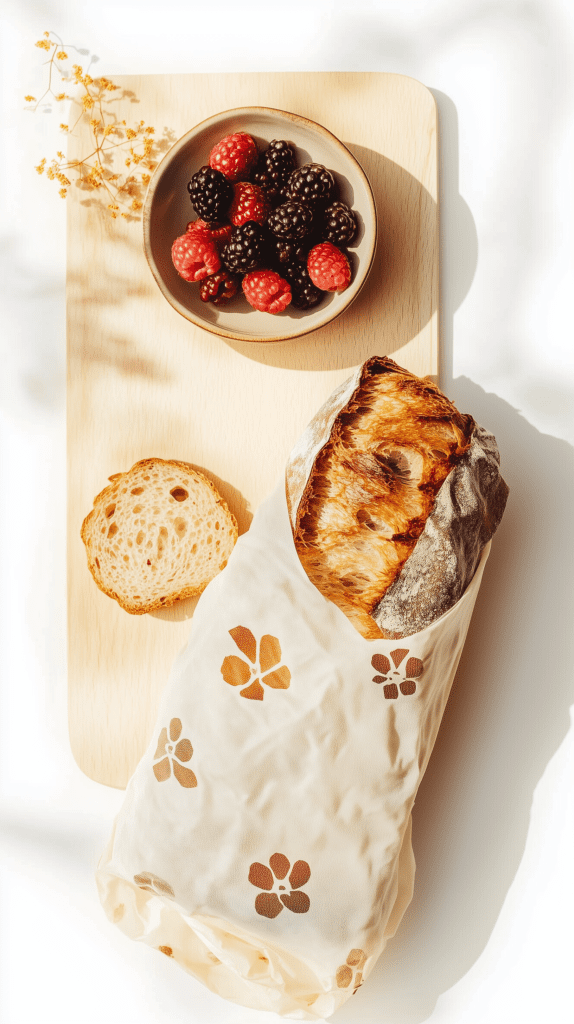
I used to go through rolls of plastic wrap like nothing, especially when saving leftovers. But once I switched to beeswax wraps, I never looked back. They mold perfectly around bowls, fruits, and veggies, and they last for months. Bonus? When they finally wear out, they biodegrade naturally—unlike plastic wrap, which sticks around in landfills forever.
Try This: Warm the wrap slightly with your hands to help it stick to bowls or itself.
Bee’s Wrap XL Bread Wrap is a sustainable, reusable alternative to plastic wrap, made in the USA with organic cotton, beeswax, plant oils, and tree resin. Ideal for keeping homemade bread fresh, it’s washable, compostable, and perfect for an eco-friendly kitchen.

Swap Store-Bought Cleaners for DIY Natural Cleaning Solutions
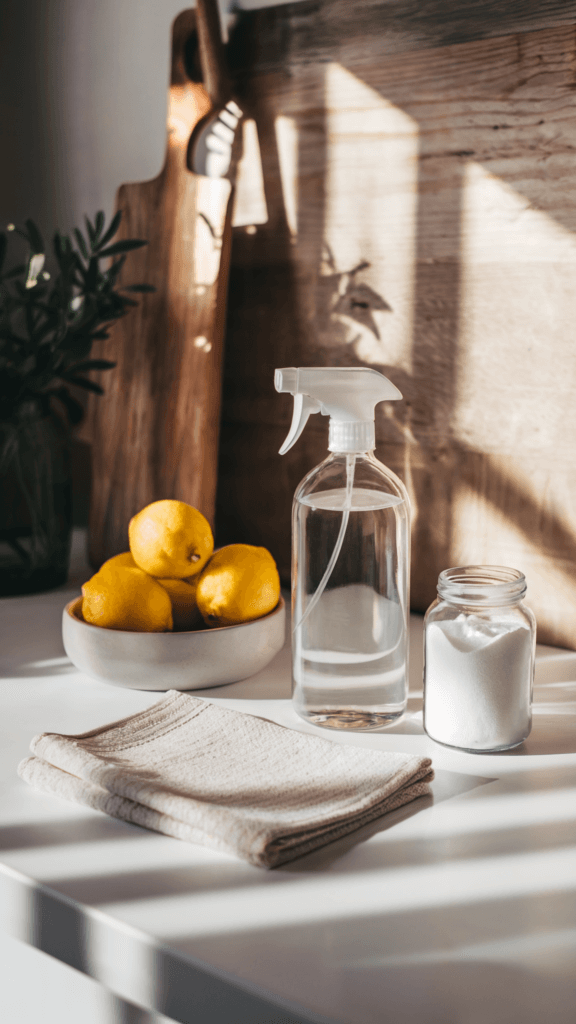
I used to think homemade cleaners wouldn’t work as well as store-bought ones—until I actually tried them. A simple mix of vinegar, baking soda, and essential oils can tackle everything from countertops to mirrors. Plus, they keep toxic chemicals out of your home.
DIY All-Purpose Cleaner Recipe:
- 1 cup vinegar
- 1 cup water
- 10 drops lemon essential oil
Just mix in a spray bottle, and you’re set!
Here are 9 more homemade cleaning product recipes to try.
Swap Disposable Paper Towels for Reusable Cloths
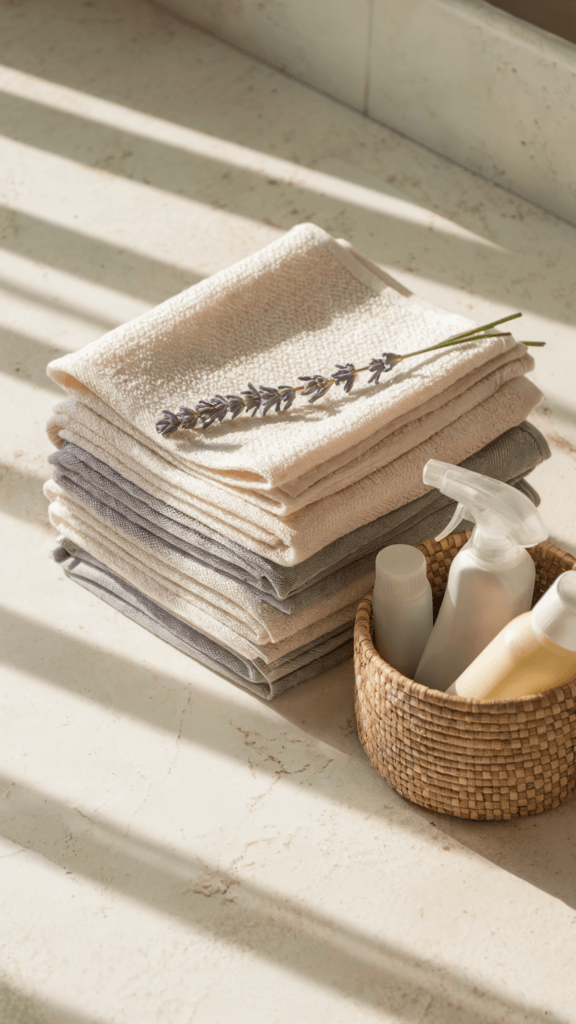
I’ll admit, I was hesitant to give up paper towels. They were my biggest eco-sin and I found them so convenient. But after switching to washable cleaning cloths and cut-up old t-shirts, I realized how unnecessary paper towels really are. Plus, they save so much money over time!
Tip: Keep a small bin under the sink for used cloths and toss them in the laundry once a week.
Swap Store-Bought Produce for Homegrown Greens
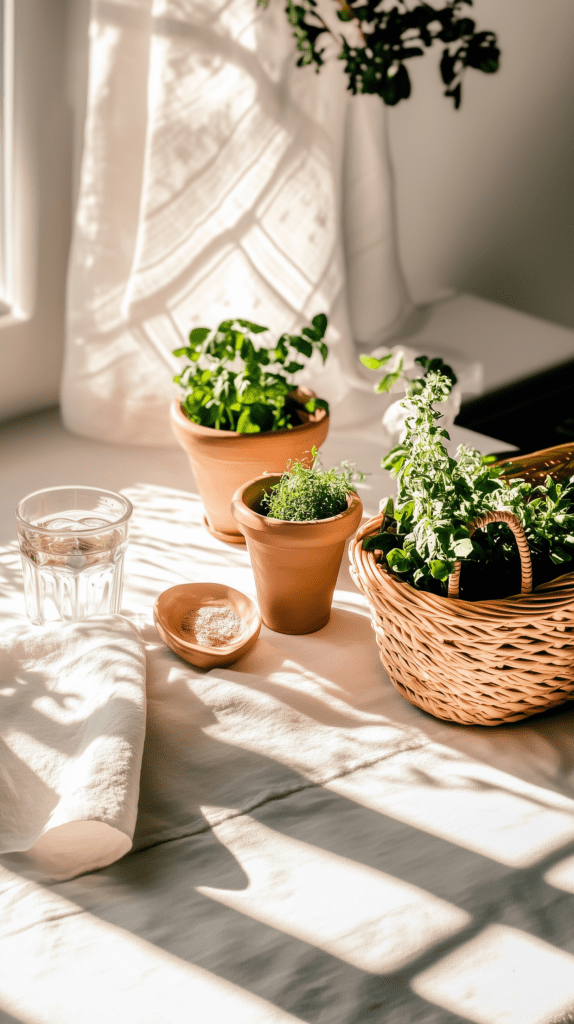
Even if you live in a tiny space, you can still grow your own food. I started with a few herbs on my windowsill, then moved on to microgreens and potted lettuce. If you have a backyard, a small raised bed or renter-friendly container garden is a great way to grow food sustainably.
If space is an issue, get inspired by these 7 creative diy indoor vertical herb garden ideas.
Swap Synthetic Sponges for Compostable Scrub Brushes

Did you know regular kitchen sponges shed microplastics every time you use them? That blew my mind. I swapped them for natural loofahs and bamboo scrub brushes, which last longer and compost naturally when they wear out.
Bonus: Loofahs actually grow on vines, so you can grow your own!
The AIRNEX Natural Kitchen Sponge is a biodegradable, plant-based dish sponge made from cellulose and coconut fiber. Designed for durability, odor resistance, and non-scratch cleaning, it offers an eco-friendly, low-waste alternative for a sustainable, toxin-free kitchen.

Swap Plastic Food Storage for Glass Jars and Containers

I used to use plastic storage containers because I thought they were the most resilient. Then I realized they could be leaching toxins into our food. I quickly invested in a set of glass storage containers and that’s that!
DIY Tip: You can also repurpose pasta sauce and other wide-mouth jars for food storage.
Elevate your pantry with Vtopmart Glass Storage Jars—a set of 7 airtight containers with bamboo lids, perfect for organizing dry goods like grains, pasta, and coffee. Crafted from high-borosilicate glass, they offer durability, elegance, and sustainability for a mindful kitchen.

Swap Synthetic Candles for Beeswax or Soy Candles

Most store-bought candles are made from paraffin wax, which releases toxic chemicals when burned. I switched to beeswax and soy candles, and not only do they smell amazing, but they also purify the air instead of polluting it.
Extra Eco-Friendly Option: Make your own with beeswax and coconut oil! Find the recipe and 25 other eco-friendly diy projects here.
Swap Plastic Grocery Bags for Cloth or Mesh Produce Bags
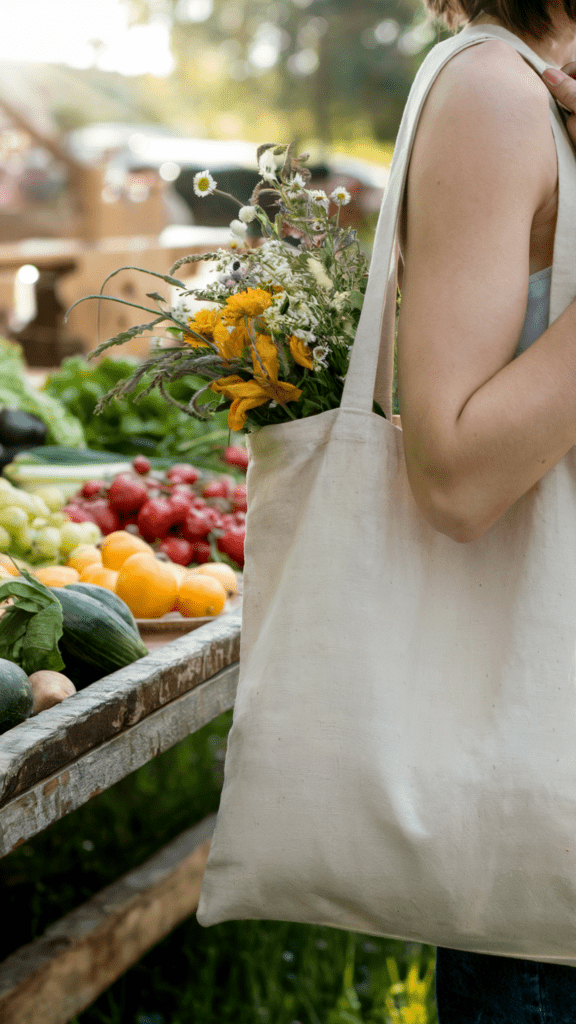
Plastic grocery bags pile up so quickly. Keeping a stash of cloth bags in the car (or by the door) makes it easy to avoid them. I also started using mesh produce bags at the farmers’ market—no more flimsy plastic bags for veggies!
Make It a Habit: Keep a foldable tote in your purse or backpack so you’re always prepared.
The VeraMia 3pc Canvas Grocery Bag Set is a sustainable, heavy-duty alternative for mindful shoppers. Crafted from 100% natural cotton canvas, these foldable, washable bags hold up to 80 lbs each, featuring real bottle pockets, reinforced stitching, and both long and short handles for effortless carrying. Perfect for eco-conscious, intentional living.
Swap Store-Bought Bread for Homemade (or Local Bakery) Bread

Once I realized how many fillers came with store-bought bread (not to mention the plastic wrapping). If baking from scratch isn’t your thing, try finding a local bakery that sells bread in paper bags or lets you bring your own bag. I’m lucky enough to have found a local bakery that uses flour that is grown and milled locally, so no glyphosate or toxins!
Quick Tip: Sourdough lasts longer than store-bought bread and doesn’t need yeast!
Swap Disposable Coffee Pods for a French Press or Reusable Filters
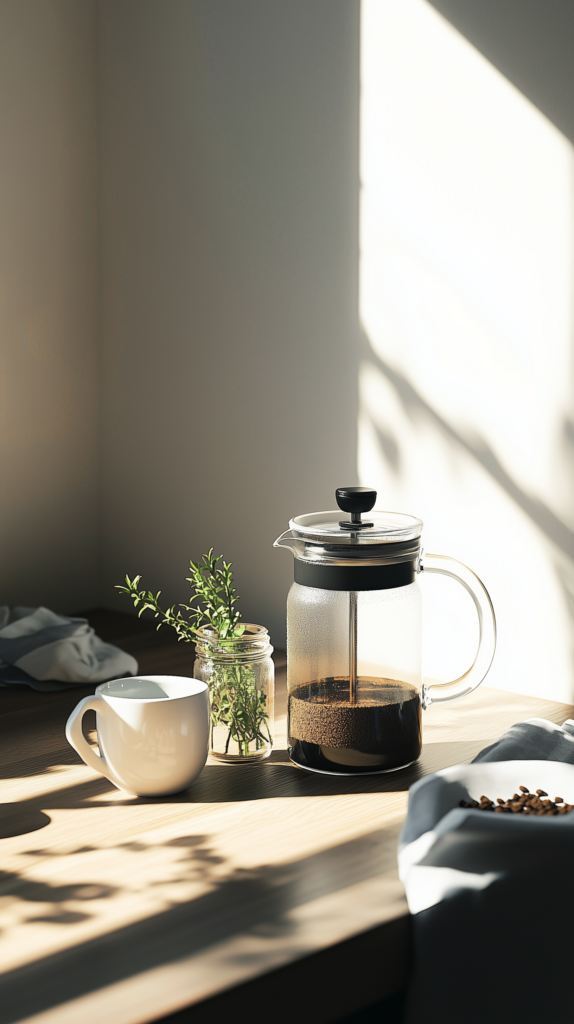
T
hose single-use coffee pods are a nightmare for the environment. I switched to a French press, and not only is it waste-free, but the coffee tastes so much better. If you use a drip coffee maker, reusable filters are a great alternative.
Extra Green Tip: Compost your used coffee grounds for the garden!
Swap Chemical Pesticides for Natural Pest Control

I used to think chemical sprays were the only way to keep pests off plants—until I learned about companion planting and neem oil. Now, I use natural methods like planting marigolds around my veggies to keep bugs away.
Try This: A spray of water, neem oil, and a little dish soap works wonders for houseplants and gardens alike.
Swap Synthetic Air Fresheners for Natural Alternatives
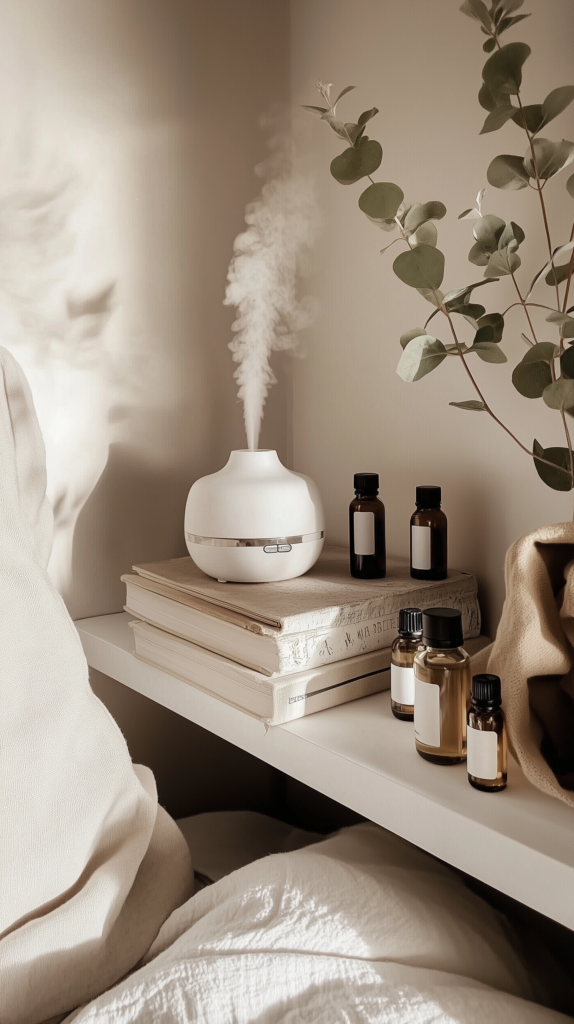
Those plug-in air fresheners? Full of toxic chemicals. Now I use essential oil diffusers, simmer pots, and beeswax candles to make my home smell amazing—without synthetic fragrances.
Bonus: Essential oil diffuser blends can help you get deeper, restful sleep. Here are 10 recipes to try.
Swap Plastic Toothbrushes for Bamboo Toothbrushes
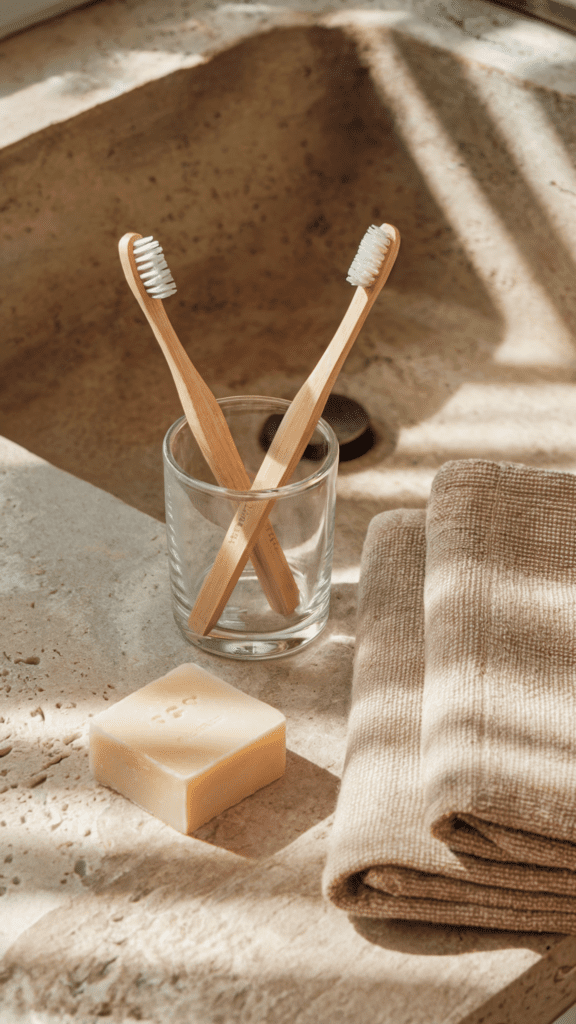
I was shocked to learn that over a billion plastic toothbrushes end up in landfills every year. Making the switch to bamboo toothbrushes was an easy (and affordable) way to cut down on that waste.
Bonus: Many brands now offer compostable bristles, too!
Swap Store-Bought Fertilizer for DIY Compost

One of the best swaps I ever made was starting a compost bin. Instead of tossing food scraps, they go into my compost—creating nutrient-rich soil for plants. Even if you don’t have a backyard, a worm bin (vermicomposting) is a great indoor option!
What to Compost: Fruit & veggie scraps, coffee grounds, eggshells, and shredded paper.
Final Thoughts
These simple swaps don’t require a huge lifestyle change—but they make a big impact over time. By choosing natural, reusable, and compostable alternatives, you’ll reduce waste, save money, and create a healthier home.
The best part? You don’t have to do everything at once. Start with one or two swaps, and before you know it, sustainable living will feel second nature.







